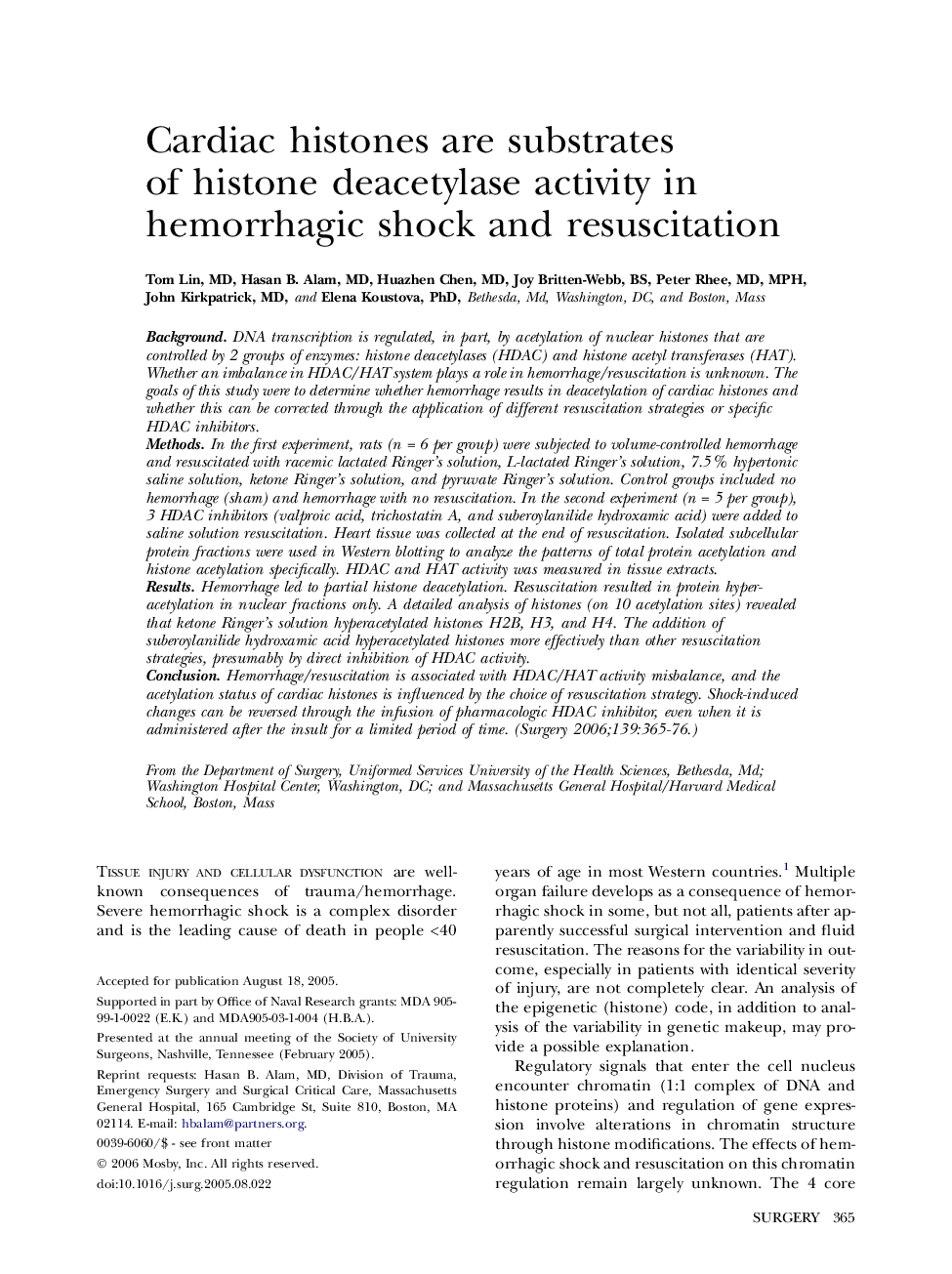| Article ID | Journal | Published Year | Pages | File Type |
|---|---|---|---|---|
| 4310231 | Surgery | 2006 | 12 Pages |
BackgroundDNA transcription is regulated, in part, by acetylation of nuclear histones that are controlled by 2 groups of enzymes: histone deacetylases (HDAC) and histone acetyl transferases (HAT). Whether an imbalance in HDAC/HAT system plays a role in hemorrhage/resuscitation is unknown. The goals of this study were to determine whether hemorrhage results in deacetylation of cardiac histones and whether this can be corrected through the application of different resuscitation strategies or specific HDAC inhibitors.MethodsIn the first experiment, rats (n = 6 per group) were subjected to volume-controlled hemorrhage and resuscitated with racemic lactated Ringer’s solution, L-lactated Ringer’s solution, 7.5% hypertonic saline solution, ketone Ringer’s solution, and pyruvate Ringer’s solution. Control groups included no hemorrhage (sham) and hemorrhage with no resuscitation. In the second experiment (n = 5 per group), 3 HDAC inhibitors (valproic acid, trichostatin A, and suberoylanilide hydroxamic acid) were added to saline solution resuscitation. Heart tissue was collected at the end of resuscitation. Isolated subcellular protein fractions were used in Western blotting to analyze the patterns of total protein acetylation and histone acetylation specifically. HDAC and HAT activity was measured in tissue extracts.ResultsHemorrhage led to partial histone deacetylation. Resuscitation resulted in protein hyperacetylation in nuclear fractions only. A detailed analysis of histones (on 10 acetylation sites) revealed that ketone Ringer’s solution hyperacetylated histones H2B, H3, and H4. The addition of suberoylanilide hydroxamic acid hyperacetylated histones more effectively than other resuscitation strategies, presumably by direct inhibition of HDAC activity.ConclusionHemorrhage/resuscitation is associated with HDAC/HAT activity misbalance, and the acetylation status of cardiac histones is influenced by the choice of resuscitation strategy. Shock-induced changes can be reversed through the infusion of pharmacologic HDAC inhibitor, even when it is administered after the insult for a limited period of time.
